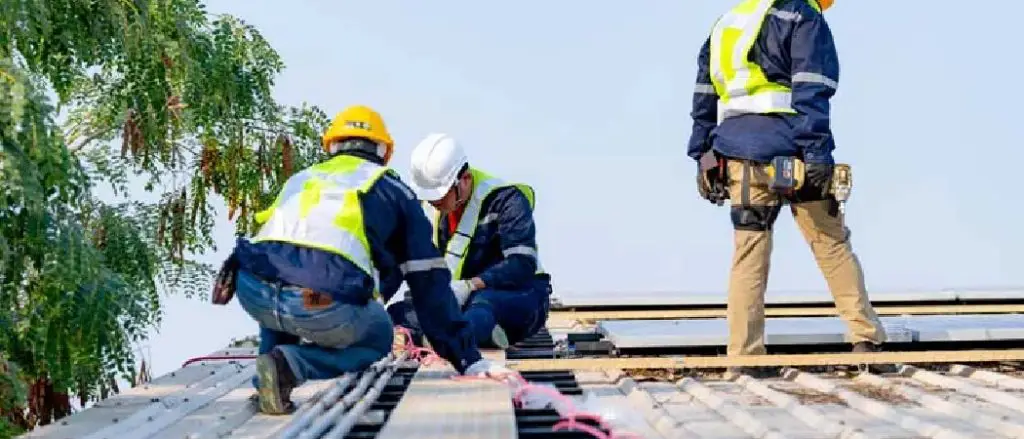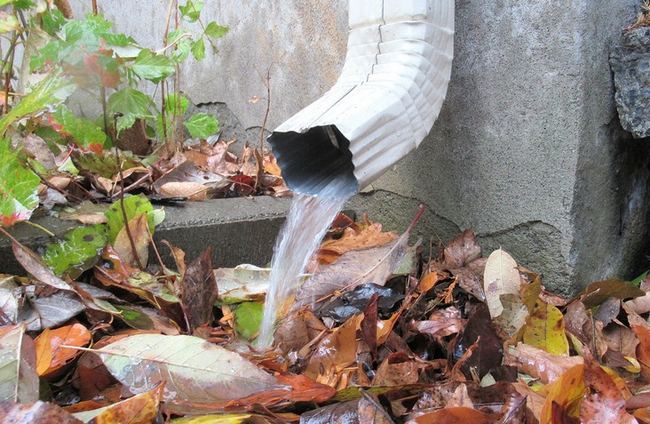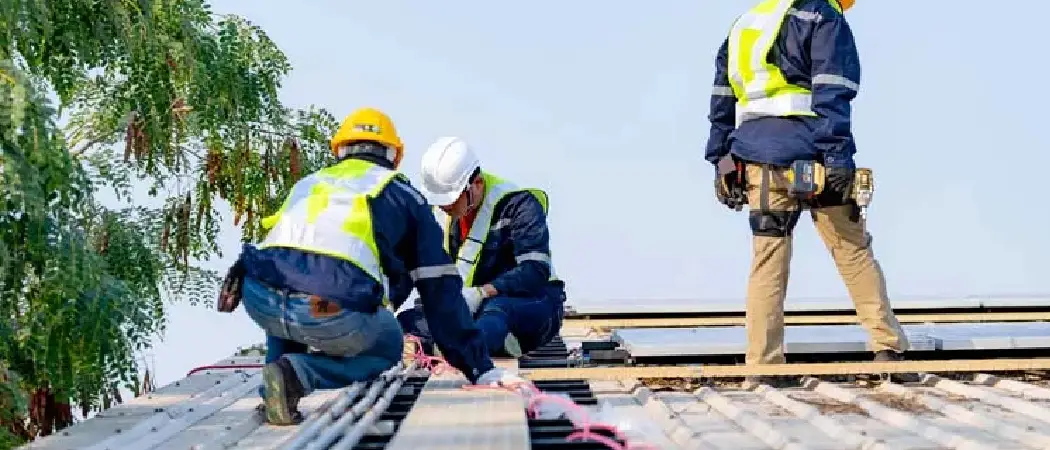To stop noisy rain gutters, clean debris regularly and secure loose parts promptly. Proper maintenance prevents disturbance.
Rain gutters are essential for directing water away from your home, but they can become noisy if not well-maintained. The sound of water hitting debris or loose gutter parts can be irritating. Fortunately, you can easily address this issue by keeping your gutters clean and ensuring all components are securely fastened.
We will discuss effective methods to prevent noisy rain gutters and maintain a peaceful environment around your home. By following these simple steps, you can enjoy the benefits of properly functioning gutters without the unwanted noise.

Understanding Noisy Rain Gutters
Noisy rain gutters can be bothersome, but there are solutions to quiet them down. Proper installation and maintenance can help minimize the noise caused by rain gutters. Ensuring the gutters are free of debris and securely fastened can prevent them from rattling and making noise during a downpour.
Causes Of Noisy Rain Gutters
Understanding the causes of noisy rain gutters is the first step to resolving this frustrating issue. When gutters become noisy, it can disrupt your peace and quiet, especially during heavy rainstorms. Below are some common reasons why rain gutters make noise:
- Loose Fasteners: Loose screws, nails, or brackets can cause gutters to rattle or vibrate when rainwater flows through them.
- Debris Buildup: Leaves, twigs, and other debris can accumulate in gutters, causing water to pool and create a disturbance as it flows over the blockage.
- Poorly Positioned Downspouts: If downspouts are not properly aligned or are too close to the side of the house, water can splash onto the gutters and create noise.
- Improper Installation: Faulty installation can lead to misaligned gutters or insufficient support, resulting in noisy vibrations.
- Expansion and Contraction: During temperature fluctuations, gutters made of certain materials, such as metal, can expand and contract, causing noise.
Impact Of Noisy Rain Gutters
Noisy rain gutters not only disrupt your peace and quiet, but they can also indicate underlying problems that require attention. Ignoring the noise can lead to potential damage and expensive repairs down the line. Here are some impacts of noisy rain gutters:
- Disturbed Sleep: If your bedroom is located near the noisy gutters, the constant rattling and dripping sounds can prevent you from getting a good night’s sleep.
- Structural Damage: Unresolved gutter issues can result in water overflow, causing damage to your home’s foundation, walls, and landscaping.
- Mold and Mildew Growth: Excessive moisture from overflowing gutters can create a breeding ground for mold and mildew, which can affect your indoor air quality and pose health risks.
- Increased Maintenance: Noisy gutters often require more frequent maintenance to prevent clogs, leaks, and further damage. This can be time-consuming and costly in the long run.
- Reduced Curb Appeal: Noisy gutters can be an eyesore and detract from your home’s overall aesthetics, potentially affecting its market value if you plan to sell.
Now that you have a better understanding of the causes and impact of noisy rain gutters, it’s important to address the issue promptly to maintain the integrity of your home and restore tranquility.
Solution 1: Clean And Unblock The Gutters
Check For Debris Buildup
As rainy seasons pass, leaves and sticks can accumulate within the gutters.
Remove Obstructions
Use a pair of gloves to safely remove any visible obstructions like branches or debris.
Clean The Gutters
Regularly using a ladder, scoop, and hose to keep gutters clear is imperative.
Solution 2: Install Gutter Guards
Install gutter guards to eliminate the issue of noisy rain gutters. Gutter guards are a proactive solution to prevent debris and leaves from accumulating in your gutters, thus minimizing the occurrence of clogs and reducing the noise caused by rainwater flowing through the gutter system.
Types Of Gutter Guards
There are various types of gutter guards available in the market, each designed to suit different gutter styles and climates. Some common types include:
- Mesh gutter guards
- Reverse curve gutter guards
- Bottle brush gutter guards
- Nylon gutter guards
Benefits Of Gutter Guards
Gutter guards offer several advantages, such as:
- Preventing debris accumulation
- Reducing the frequency of gutter cleaning
- Minimizing gutter blockages and clogs
- Protecting the gutters from damage
- Extending the lifespan of the gutter system
How To Install Gutter Guards
Installing gutter guards requires proper planning and execution. Here’s a basic guide to installing gutter guards:
- Clean the gutters thoroughly
- Measure the length of the gutters to determine the amount of gutter guard material needed
- Cut the gutter guards to fit the measurements of the gutters
- Install the gutter guards securely, ensuring they cover the entire length of the gutter system
- Perform a thorough inspection to verify proper installation and functionality

Solution 3: Adjust The Pitch Of The Gutters
One effective way to stop noisy rain gutters is by adjusting the pitch of the gutters. Properly adjusting the pitch ensures that water flows smoothly and eliminates the annoying sounds caused by obstructions or improper alignment.
Identify The Pitch
To begin, you need to identify the current pitch of your gutters. This can be done by using a level to determine the angle at which the gutters are installed.
Tools Needed For Adjustment
For adjusting the pitch of your gutters, you will need a ladder, a level, screwdriver, and gutter brackets if realignment is required.
Steps To Adjust The Pitch
- 1. Position the ladder securely under the area of the gutter needing adjustment.
- 2. Use the level to determine the current pitch of the gutters.
- 3. Loosen the screws holding the gutter brackets in place.
- 4. Gradually raise one end of the gutter to achieve the desired pitch.
- 5. Ensure the gutter is sloped towards the downspout for proper water drainage.
- 6. Secure the gutter brackets in their new position.
- 7. Check the pitch using the level to confirm proper alignment.
- 8. Test the gutters by running water through them to ensure smooth flow and absence of noise.
By adjusting the pitch of your gutters, you can effectively prevent noisy disruptions during rainstorms and ensure proper water drainage.
Solution 4: Install Downspout Extensions
If you’re tired of the noisy rain gutters wreaking havoc on your peaceful home, it’s time to consider installing downspout extensions. These handy additions can effectively redirect the flow of rainwater away from your home, preventing it from causing any disturbance or damage. In this section, we will explore the reasons for installing downspout extensions, how to select the right type, and the step-by-step installation process.
Reasons For Installing Downspout Extensions
Downspout extensions serve several important purposes when it comes to maintaining the peace and integrity of your home. Here are some key reasons why you should consider installing them:
- Preventing Noisy Rain Gutters: By extending the length of your downspouts, you can divert the water away from your home’s foundation. This not only stops the annoying noise caused by water hitting the gutter, but it also prevents any potential damage to your home’s structure.
- Avoiding Erosion: When rainwater falls directly from your gutters too close to your foundation, it can result in soil erosion. Downspout extensions help direct the water away from your home, preserving the soil and preventing erosion.
- Protecting Landscaping: If your gutters release water directly onto your landscaped areas, it can cause washouts, drowning plants, and creating unsightly puddles. Installing downspout extensions will allow you to redirect water away from your garden, protecting your beautiful landscaping.
Selecting The Right Type Of Extension
When it comes to selecting downspout extensions, it’s essential to choose the right type that suits your home’s needs. Here are some factors to consider:
- Material: Downspout extensions are commonly made of materials such as vinyl, aluminum, or plastic. Each material has its own pros and cons, so consider durability, cost, and maintenance requirements when making your selection.
- Length: Measure the distance between your downspout outlet and the ideal location for water discharge. This will help you determine the appropriate length of the extension you’ll need.
- Aesthetics: Consider the visual impact of the extension on your home’s exterior. Choose a style and color that complements your overall design.
Installation Steps
Installing downspout extensions is a relatively simple process that can be done with just a few tools. Follow these steps to ensure a successful installation:
- Measure: Determine the length of downspout extension needed to direct the water away from your home.
- Prepare the Area: Clear the space around the downspout outlet and ensure there are no obstructions, such as debris or plants.
- Attach the Extension: Connect the extension piece to the downspout outlet and secure it in place using screws or clips.
- Position the Extension: Direct the extension away from your home, ensuring that it slopes downward to allow water to flow freely.
- Secure the Extension: Attach the extension securely to the ground using stakes or brackets to prevent it from moving or getting damaged.
- Test the Flow: Once installation is complete, run water through the gutters to ensure that it flows smoothly through the downspout extension.
By following these straightforward steps, you can successfully install downspout extensions and put an end to those noisy rain gutters.
Solution 5: Use Noise-reducing Inserts
To stop noisy rain gutters, consider using noise-reducing inserts as a solution. These inserts help to muffle the sound of rain hitting the gutters, providing a quieter environment. Easy to install, they offer a simple and effective way to reduce gutter noise.
Are your rain gutters making disturbing noises that keep you up at night? If you’ve tried all the other solutions to stop noisy rain gutters without success, it might be time to consider using noise-reducing inserts. These inserts are designed to mitigate the noise caused by water flow in your gutters, ensuring a peaceful and quiet environment around your home. In this section, we’ll discuss the types of noise-reducing inserts available and provide step-by-step installation instructions to help you put an end to the annoying rattling and banging noises once and for all.
Types Of Noise-reducing Inserts
When it comes to noise-reducing inserts for rain gutters, there are several options to choose from. Here are the most common types widely available in the market:
1. Foam Inserts: Foam inserts are made of high-quality polyurethane foam that absorbs and dampens the sound vibrations caused by water flowing through the gutters. These inserts are easy to install and can be cut to size for a perfect fit.
2. Rubber Inserts: Rubber inserts are designed to fit inside the gutter hangers or brackets. They work by reducing the metal-on-metal contact and cushioning the gutter system, minimizing noise caused by water flow and gutters expanding and contracting.
3. Vinyl Inserts: Vinyl inserts are a popular choice as they are lightweight, easy to install, and cost-effective. They fit snugly into the gutter system, acting as a buffer between the metal parts, reducing noise caused by vibrations and movement.
Installation Instructions
Follow these simple steps to install noise-reducing inserts and enjoy a peaceful and quiet rainy season:
1. Clean the gutters: Before installing the inserts, make sure your gutters are clean and free from debris. Remove any leaves, twigs, or other obstructions that could hinder the proper installation.
2. Measure and cut: Measure the length of your gutters and cut the inserts accordingly. Ensure a snug fit by trimming them to the right size.
3. Insert the inserts: Starting from one end, slide the inserts into the gutter system. Press them firmly so that they sit securely in place.
4. Secure the inserts: Depending on the type of inserts you are using, you may need to fasten them with screws or adhesive. Follow the manufacturer’s instructions for proper installation.
5. Test for noise reduction: Once the inserts are installed, run water through the gutters to check for any remaining noise. If you still hear noise, adjust or reinforce the inserts as needed.
By using noise-reducing inserts, you can finally enjoy the soothing sound of rain without any annoying gutter noises. Choose the type of insert that suits your needs and follow the installation instructions carefully for the best results. Say goodbye to bothersome sounds and hello to a tranquil rainstorm!

Frequently Asked Questions On How To Stop Noisy Rain Gutters
How Do I Make My Rain Gutters Quieter?
To make rain gutters quieter, ensure they are securely fastened, clean of debris, and add insulation strips.
Why Are My Gutters So Loud When It Rains?
Gutters can be loud during rain because of debris, loose connections, or improper installation. Debris like leaves and twigs can cause water to cascade and create noise. Loose connections or improper installation can result in rattling or vibrating sounds. Regular maintenance can help reduce noise.
Should I Hear Water In My Gutters?
Yes, hearing water in your gutters is normal. It indicates that water is flowing properly through them.
How Do You Fix Rattling Gutters?
To fix rattling gutters, first, check for loose or damaged fasteners. Tighten or replace as needed. Next, examine the downspouts for clogs or damage and clear or repair them. Finally, ensure the gutters are properly sloped for drainage. Regular maintenance can prevent future rattling issues.
Conclusion
Noisy rain gutters can be a nuisance, but with these simple maintenance tips, you can enjoy peace and quiet. Keeping your gutters clean and secure will prevent unnecessary sounds. Regular inspections and repairs can help maintain a quiet and efficient gutter system.
Say goodbye to annoying gutter noises!

